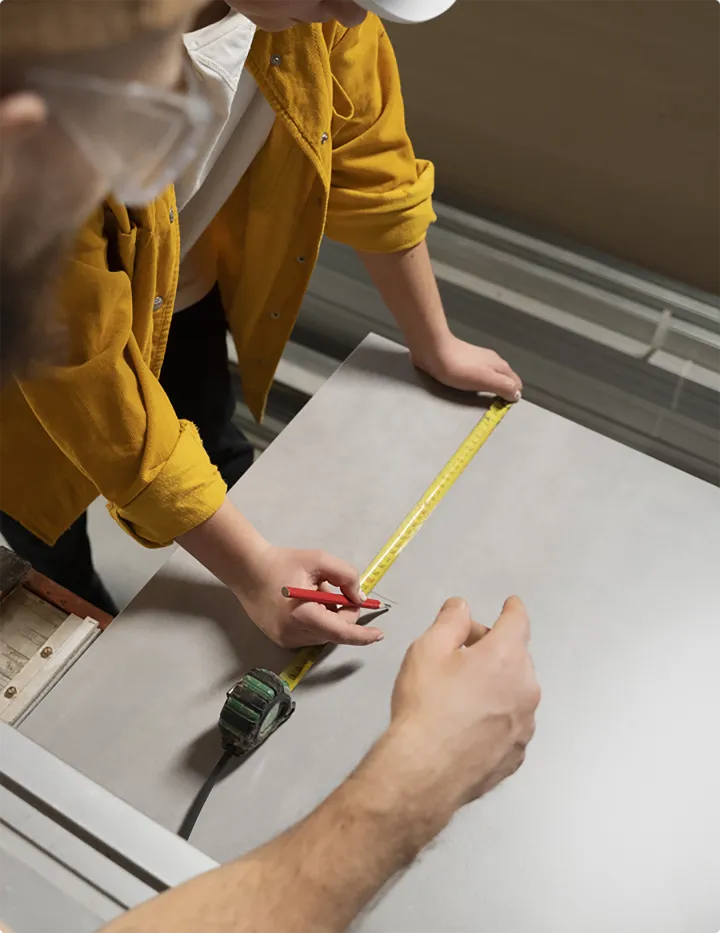- Afrikaans
- Albanian
- Amharic
- Arabic
- Armenian
- Azerbaijani
- Basque
- Belarusian
- Bengali
- Bosnian
- Bulgarian
- Catalan
- Cebuano
- Corsican
- Croatian
- Czech
- Danish
- Dutch
- English
- Esperanto
- Estonian
- French
- German
- Greek
- Hindi
- Indonesian
- irish
- Italian
- Japanese
- Korean
- Lao
- Malay
- Myanmar
- Norwegian
- Norwegian
- Polish
- Portuguese
- Romanian
- Russian
- Serbian
- Spanish
- Swedish
- Thai
- Turkish
- Ukrainian
- Uzbek
- Vietnamese
dec . 05, 2024 13:51 Back to list
mineral fiber ceiling tiles
The Versatility of Mineral Fiber Ceiling Tiles
When it comes to interior design and construction, the choice of ceiling materials can drastically impact both aesthetics and functionality. Among the myriad options available, mineral fiber ceiling tiles have emerged as a popular choice due to their unique properties and advantages. Composed primarily of natural and recycled materials, mineral fiber tiles offer an excellent balance of performance, sustainability, and design versatility.
Understanding Mineral Fiber Ceiling Tiles
Mineral fiber ceiling tiles are primarily made from a blend of minerals, including gypsum and fiberglass, as well as recycled content. These materials are engineered to provide numerous benefits, making them suitable for a wide range of applications.
One of the main characteristics of mineral fiber tiles is their sound absorption capability. This quality makes them particularly ideal for spaces that require acoustical control, such as offices, schools, and healthcare facilities. By reducing noise levels, these tiles contribute to a more comfortable and productive environment.
In addition to their acoustical advantages, mineral fiber tiles are often designed to be lightweight, which makes them easy to install and handle. This ease of installation can contribute to lower labor costs and faster project timelines. Furthermore, these tiles come in an array of textures, colors, and finishes, allowing designers the flexibility to achieve the desired look for any space.
Durability and Maintenance
Durability is another hallmark of mineral fiber ceiling tiles
. They are resistant to moisture and humidity, making them ideal for use in areas prone to such conditions, like kitchens and bathrooms. Some types of mineral fiber tiles also boast a high level of resistance to mold and mildew, further enhancing their suitability for a variety of environments.In terms of maintenance, mineral fiber tiles require minimal upkeep. They can easily be cleaned with a damp cloth or a mild detergent to remove dust and stains, ensuring that the ceiling retains its aesthetic appeal over time. Additionally, in the event that a tile becomes damaged, individual tiles can often be replaced without the need for a complete ceiling overhaul.
mineral fiber ceiling tiles

Environmental Considerations
As the world shifts towards more sustainable building practices, the environmental impact of construction materials has come under scrutiny. Mineral fiber ceiling tiles have an edge in this regard, as many manufacturers prioritize the use of recycled materials in their production processes. This not only reduces waste but also conserves natural resources.
Moreover, mineral fiber tiles are typically produced with low levels of volatile organic compounds (VOCs), which can contribute to indoor air pollution. By opting for these tiles, architects and builders can help ensure healthier indoor environments for occupants.
Application Versatility
The application of mineral fiber ceiling tiles extends beyond just traditional office or classroom spaces. Their appeal lies in their versatility, allowing them to be utilized in a diverse range of environments. Retail spaces, hospitality venues, and even residential settings are increasingly adopting mineral fiber ceiling tiles for their aesthetic charm and practical benefits.
Creative design options abound, from sleek, contemporary looks to more traditional styles. Some manufacturers even offer custom print options, allowing businesses to project their branding directly onto the ceiling, creating a unique and memorable environment for customers and clients.
Conclusion
In summary, mineral fiber ceiling tiles represent an excellent choice for both commercial and residential applications. Their sound-absorbing properties, durability, ease of maintenance, and sustainable production practices make them a wise investment for any building project. As architects and interior designers continue to explore innovative solutions for modern spaces, mineral fiber ceiling tiles will undoubtedly remain a popular option. Their ability to seamlessly blend functionality with aesthetics ensures that they will continue to play a significant role in the design of interiors for years to come.
-
Transform Interiors with PVC Gypsum Ceiling: A Stylish, Durable, and Moisture-Resistant SolutionNewsMay.19,2025
-
The Smart Interior Upgrade: Discover the Durability and Versatility of Gypsum Ceiling Access Panel SolutionsNewsMay.19,2025
-
The Smart Choice for Interior Design: Discover the Value of PVC Gypsum Ceiling SolutionsNewsMay.19,2025
-
Mineral Fiber Ceiling Tiles: The Smart Blend of Performance and AestheticsNewsMay.19,2025
-
Mineral Fiber Ceiling Tiles: The Superior Choice Over Gypsum for Sound and Fire SafetyNewsMay.19,2025
-
Mineral Fiber Ceiling Tiles: Eco-Friendly Strength and Style for Every CeilingNewsMay.19,2025







